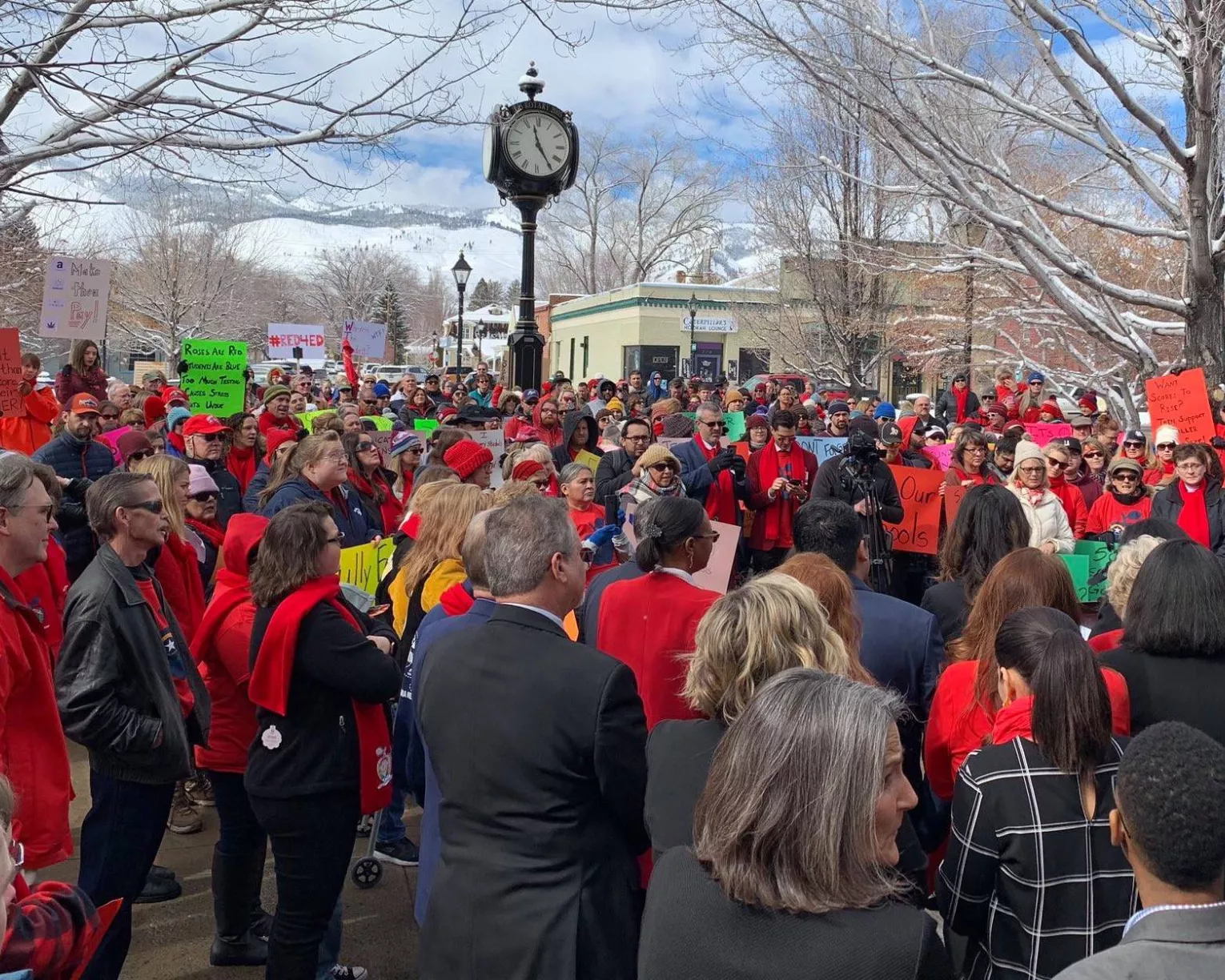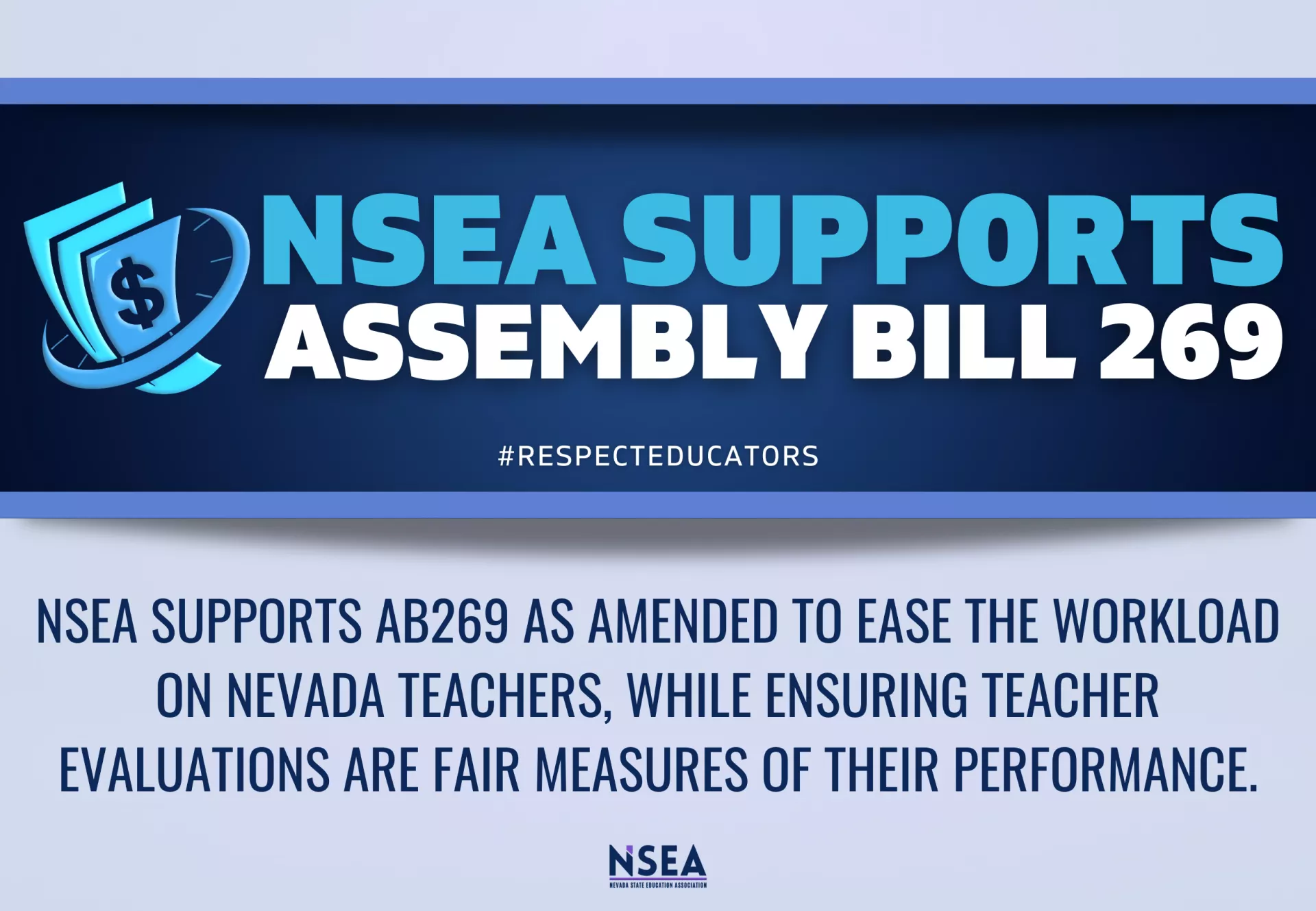Along with pay, class size, and over-testing, teacher evaluations top the list of teacher concerns in Nevada. With the mass exodus of teachers creating thousands of vacant positions and with the increasing demands and pressures of the job, now is the time to take something off of teachers’ plates. A year off from the evaluation process after completing two consecutive effective evaluations tells teachers their professionalism is valued and they are trusted. Meanwhile, student learning goals have proven inconsistent and ineffective at improving student performance. Also, there has been a serious validity issue with their use, and they take up precious time. The changes in AB269 provides a modicum of relief from the rigors of teaching.
NSEA believes teacher evaluations should be based on instructional practice, leadership, and professional responsibilities. Educators want to be held accountable with fair, rigorous, and valid measures. Evaluation structures that depend on student data are not a fair or valid measure, because student growth is dependent on many factors not under a teacher’s control. During COVID-19, these outside factors played an outsized role in student growth and will be impacting student performance for many years to come.
Meeting the demands of the teaching profession requires tremendous will, ability, creativity, organization and preparation. It also requires learning, feedback, and support. To ensure high quality teaching, evaluations need to be meaningful and provide a format for constructive assistance. Over the past 12 years, Nevada has worked to build this framework to measure teachers’ instructional practice and leadership as well as professional responsibilities. Unfortunately, Nevada’s schools and teachers have suffered through competing political emphasis on the use of student data, first with the use of test scores as part of an educators’ evaluations and now measuring growth. These competing priorities have compromised the entire accountability system— relegating proven educational practice including student engagement, lesson planning including differential instruction, scaffolding, professional development opportunities, and classroom management.
Suggested Further Reading
Question about this bill? Message Us!

